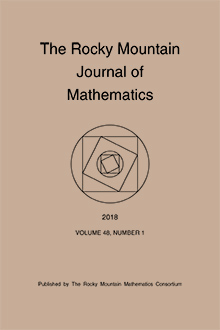Abstract
In the 1980s, Daryl Cooper introduced the notion of a C-complex (or clasp-complex) bounded by a link and explained how to compute signatures and polynomial invariants using a C-complex. Since then, this has been extended by works of Cimasoni, Florens, Mellor, Melvin, Conway, Toffoli, Friedl, and others to compute other link invariants. Informally, a C-complex is a union of surfaces which are allowed to intersect each other in clasps. We study the minimal number of clasps amongst all C-complexes bounded by a fixed link . This measure of complexity is related to the number of crossing changes needed to reduce to a boundary link. We prove that if is a 2-component link with nonzero linking number, then the linking number determines the minimal number of clasps amongst all C-complexes. In the case of 3-component links, the triple linking number provides an additional lower bound on the number of clasps in a C-complex.
Citation
Jonah Amundsen. Eric Anderson. Christopher William Davis. Daniel Guyer. "The C-complex clasp number of links." Rocky Mountain J. Math. 50 (3) 839 - 850, June 2020. https://doi.org/10.1216/rmj.2020.50.839
Information





